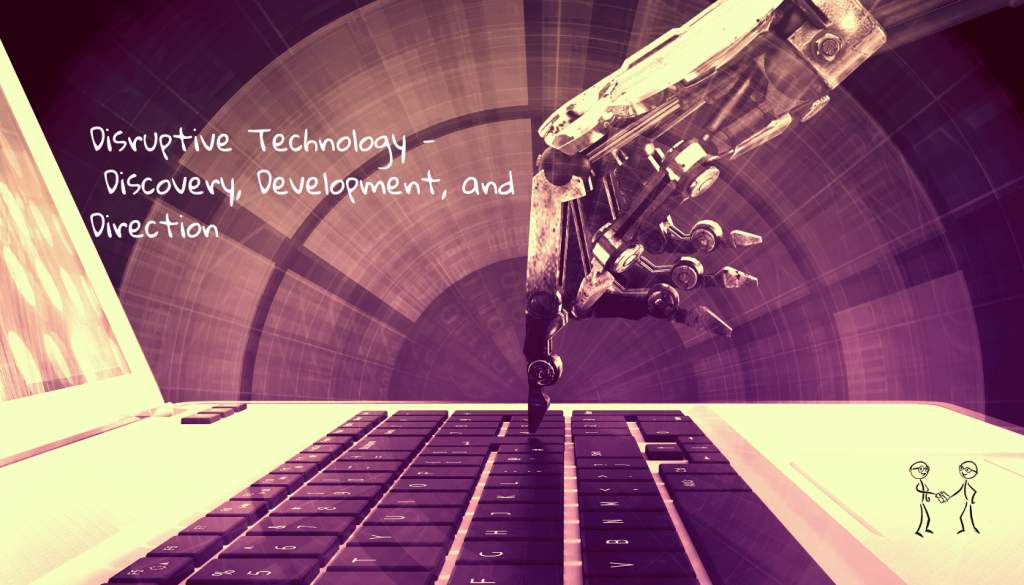The last decade or so has presented the most amazing digital technology challenges many of us have ever seen. Perhaps you feel that you are a solid conqueror of social media, website mobility, and more. However, this is no time to get complacent in any way. Every year there are many digital topics that come up and lead many of us wondering how do we keep up.
We are facing certain disruptive technologies that more than likely will have a pivotal role in how we do business in the future. We are barely grasping the social media revolution that began about ten years ago and here we are with buzz phrases such as ‘artificial intelligence’, virtual reality’, ‘internet of things’, and many more.
Disruption
I often reflect on classes I taught a few years back and remember vividly the challenges many people faced. Disruptive technology can certainly make us panic. Think of the definition of ‘disruptive technology’. Wikipedia uses the term ‘disruptive innovation’ and it states:
“In business, a disruptive innovation is an innovation that creates a new market and value network and eventually disrupts an existing market and value network, displacing established market-leading firms, products, and alliances. The term was defined and first analyzed by the American scholar Clayton M. Christensen and his collaborators beginning in 1995,and has been called the most influential business idea of the early 21st century”
So really, we have had disruptive technology for a long time. The fax machine was huge in the day. The photocopier, mimeograph machine, desktop computer, the world wide web (WWW), and much more. All of these examples played a pivotal role in business and demanded that we adjust our business model.
Discovery
With change, we all have a choice. Resist or discover. If disruptive technology becomes mainstream in how we do business then resisting is only holding off the inevitable. Whereas if we are in discovery mode then we will be at a better pace to pivot as needed if and when consumers and businesses fully adopt the new innovation or technology.
Discovery changes the mindset of our business model and culture. Discovery does not allow for complacency. Discovery opens the doors to new ideas. A discovery mindset attracts top talent and it attracts potential residents. How? Because discovery by its very definition invokes feelings of positivity, growth, future, and innovation. Discovery is proactive versus reactive.
Discovery allows you to test. Test the tool. Test the process. Test the engagement. Test the creativity. Test the application. Testing provides you with data. And data helps you with your development.
Development
The next phase is simply development. You have tested the disruptive innovation and you have found it worthy of development. But what are you actually developing? It is not necessarily the tool. For instance. Chatbots are a very hot topic for our industry. Now there are definitely different ways of making a chatbot and there are numerous options available for a chatbot. But at the end of the day, it is simply a chatbot. Development involves your people.
One of the biggest failures about ten years ago was having the hands-off approach to technology training. The opinion of many was: “You’re a young professional, you know how to Facebook.” Ouch! That was an actual statement that many of us heard and it still gives me the shivers to this day. So what happened? With no development of people, the disruptive innovation was declared useless by numerous companies in our industry.
What happened next set the stage for a pivotal shift within our industry. We saw property management companies who were in the ‘discovery’ mode. Those explorers dug their heels in and showcased the benefits that came from the adoption of that disruptive technology and how it aligned with resident and prospect behavior.
The explorers paved the way for many other companies to reassess virtually every component of their business model. It was discovered that disruptive technology had an impact on much more than just marketing. It affected public relations, human resources, asset management, customer retention, and much more.
So essentially this meant a major investment in developing our people. This required a new perspective on what training involved. Training on Fair Housing or apartment leasing strategies was not enough. Everyone needed some sort of training to understand what the company was adopting.
Years ago I asked one of my team members to call up a company and request an invoice. Faxing was the big thing back then. What he was told has made me chuckle to this day. Here is a reenactment.
My employee: Hello can you please fax over a copy of invoice 1234?
Company rep: I am sorry but the person in charge of faxing is away for lunch right now.
My employee: You have a person in charge of faxing?
Company rep: Yes we do and she is the only one who knows how to use it. She will be back in an hour and we will have that sent over.
My employee hangs up the phone and tells me the story and we all had a good laugh.
So what is the teaching point? Adoption cannot be by just one person or one department. Adoption must be by everyone. Even if a particular employee or job title is not directly involved with the new disruptive innovation, their awareness of what it is and how it will be used is critical.
My modern-day example has to do with Instagram. At this time Instagram does not allow clickable links in your post updates. If you want someone to click on a link you have to direct them to your Instagram bio. It’s a simple straightforward process. So you can imagine how it’s like nails on a chalkboard when I see companies who share the exact same content that they would for Facebook or Twitter and then post it on Instagram. The post has a link and the link does nothing. #Facepalm
So if you do not have employee development you are going to be dealing with many facepalm moments. That is where direction comes into play.
Direction
With disruptive innovation, one does not simply train people on how to use the new innovation but more importantly why. Expectations need to be set on what the targets goals are with the new disruptive innovation that is being deployed. The path to get to those goals needs to be clearly set out.
For example. When Facebook started to become mainstream for our industry I would see goals such as:
Having our page reach a certain amount of likes.
A certain amount of posts per week.
However, the path to get there was a bit cloudy. The training to understand what the purpose behind the goals was non-existent. More direction was needed other than a bullet list of expectations. Questions such as these would need to be considered:
- Is my Facebook page a lead generation tool or a resident retention tool?
- Are my posts only for my residents or for my overall local community?.
- Do we understand what social tools are current residents and future prospects are using?
And many more…
Disruptive Technology – Conclusion
Clear direction is needed more than ever. The adoption rate of disruptive technologies is faster than it has ever been. Discovery is the better best-practice decision. Change the mindset. Explore your options. Develop your people. Be on the positive side of emerging technologies.


